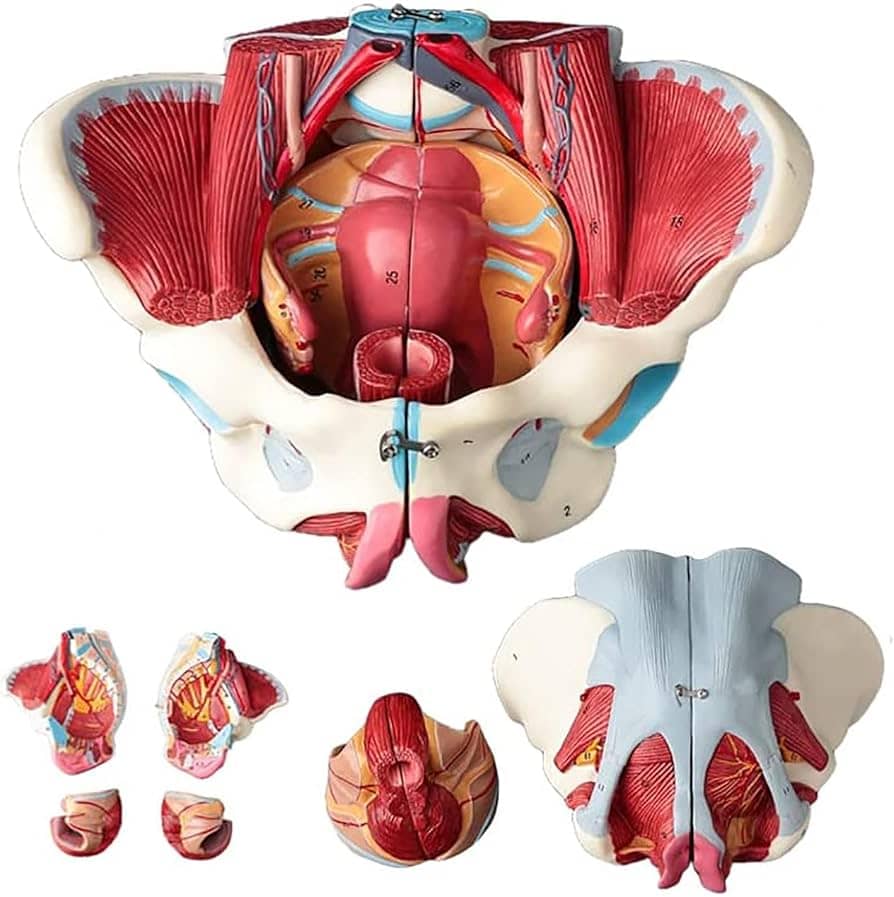What are Kegel exercises?
Kegel exercises are simple clench-and-release exercises designed to strengthen the muscles of the pelvic floor. These muscles support the uterus, bladder, small intestine, and rectum. By regularly practicing Kegel exercises, women can improve pelvic muscle tone, which is important for bladder control, sexual function, and overall pelvic health.
Why should I bother?
Kegel exercises are important because they help maintain the strength and flexibility of the pelvic floor muscles. This is especially crucial for women during and after pregnancy, during menopause, or as part of a general fitness routine. Strong pelvic floor muscles can prevent or reduce symptoms of incontinence, improve sexual health, and support better recovery after childbirth.

How do I find and isolate my pelvic floor muscles?
To identify your PC muscles, try to stop the flow of urine while you’re going to the bathroom. The muscles you use to do this are your pelvic floor muscles. However, avoid the habit of doing Kegels whilst peeing, as it increases the risk of Urinary Tract Infections (UTIs).
If you have any difficulty identifying the right muscles – don’t worry, this is very common. Many women find it difficult to move their pelvic floor muscles separately from their abdominal or gluteal (buttock) muscles. If this describes you we highly recommend you consider getting an EMS device, which is currently the single best way to make sure you are correctly moving and strengthening the right muscles when doing your Kegels.
How can I get started with Kegel exercises?
A simple method is as easay as sitting or lying down comfortably, and tightening your muscles as if you’re trying to stop the flow of urine. Hold the contraction for 3 to 5 seconds, then relax for an equal amount of time. Repeat this process 10 to 15 times per session. Aim to do this at least three times a day – your morning commute, afternoon school run, plus just before sleeping are perfect opportunities.
How long does it take to see results from Kegel exercises?
Most women start to notice improvements in muscle control and bladder function within 4 to 6 weeks of regular practice. Consistency is key, so it’s important to incorporate Kegel exercises into your daily routine.
Can Kegel exercises help with incontinence?
Yes, Kegel exercises can help manage and even prevent urinary incontinence, particularly stress incontinence (leakage that occurs with coughing, sneezing, or exercise) and urge incontinence (a sudden, intense urge to urinate). By strengthening the pelvic floor muscles, you can improve bladder control.
Are there any devices that can help with Kegel exercises?
Yes, there are several devices designed to assist with Kegel exercises. These include biofeedback devices, vaginal weights, and EMS (Electrical Muscle Stimulation) devices. These tools can help you identify the correct muscles, track your progress, and ensure you’re performing the exercises effectively. Click here to read our reviews of the best Kegel exercisers available in 2024.
Can Kegel exercises be done during pregnancy?
Yes, Kegel exercises are safe and beneficial during pregnancy. Strengthening your pelvic floor muscles during pregnancy can help support your pelvic organs, prevent incontinence, and promote faster recovery after childbirth. However, it’s always a good idea to consult with your healthcare provider before starting any new exercise routine during pregnancy.
How can I tell if I’m doing Kegel exercises correctly?
If you’re doing Kegel exercises correctly, you should feel the muscles around your vagina and anus lift and tighten when you contract your pelvic floor muscles. You shouldn’t feel any movement in your buttocks, thighs, or abdomen. If you’re unsure, consider using a biofeedback device that can provide real-time feedback or consult with a pelvic floor therapist.
Can Kegel exercises improve sexual health?
Yes, Kegel exercises can enhance sexual health by increasing muscle tone and blood flow in the pelvic region. Strong pelvic floor muscles can lead to more intense orgasms, better control during intercourse, and overall improved sexual satisfaction.
How often should I do Kegel exercises?
For best results, aim to do Kegel exercises three times a day, with each session consisting of 10 to 15 repetitions. Over time, you can gradually increase the duration of each contraction and the number of repetitions as your muscles become stronger.
Are there any risks associated with Kegel exercises?
Kegel exercises are generally safe for most women. However, overdoing them or performing them incorrectly can cause muscle fatigue or soreness. It’s important to balance Kegel exercises with relaxation of the pelvic floor muscles to avoid over-tightening. If you experience any discomfort or pain, it’s advisable to stop and consult with a healthcare provider.
Tags:
Pelvic Floor, Kegels, Kegel exercises, clench and release, uterus, bladder, rectum, pelvic muscle tone, bladder control, sexual function, pelvic health, pelvic fitness, incontinence, post partum recovery, PC muscles, electrical muscle stimulation (EMS), EMS, urinary incontinence, stress incontinence, urge incontinence, bladder control, biofeedback, vaginal weights, ben wa